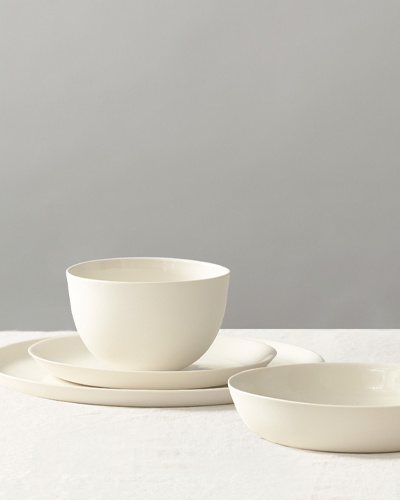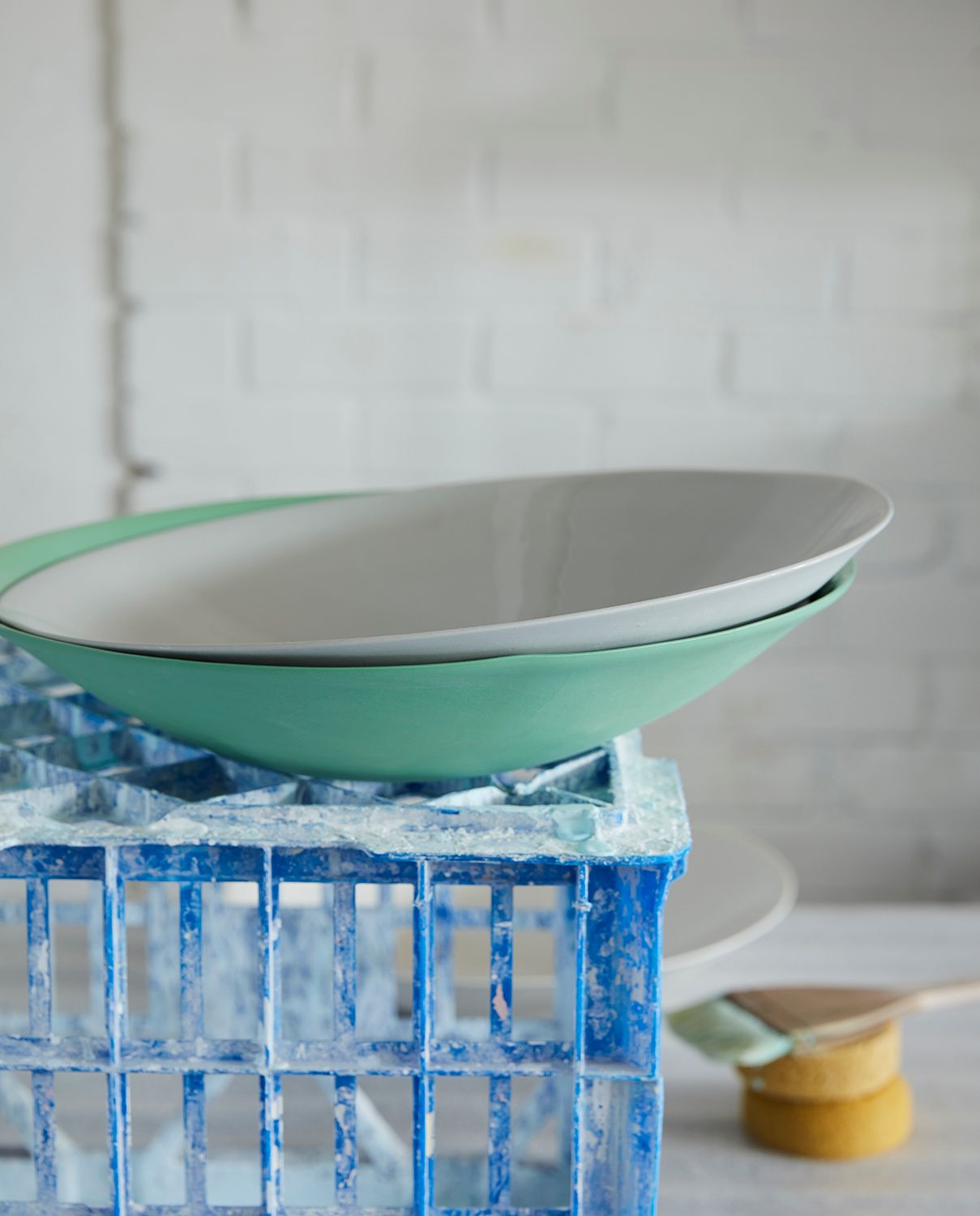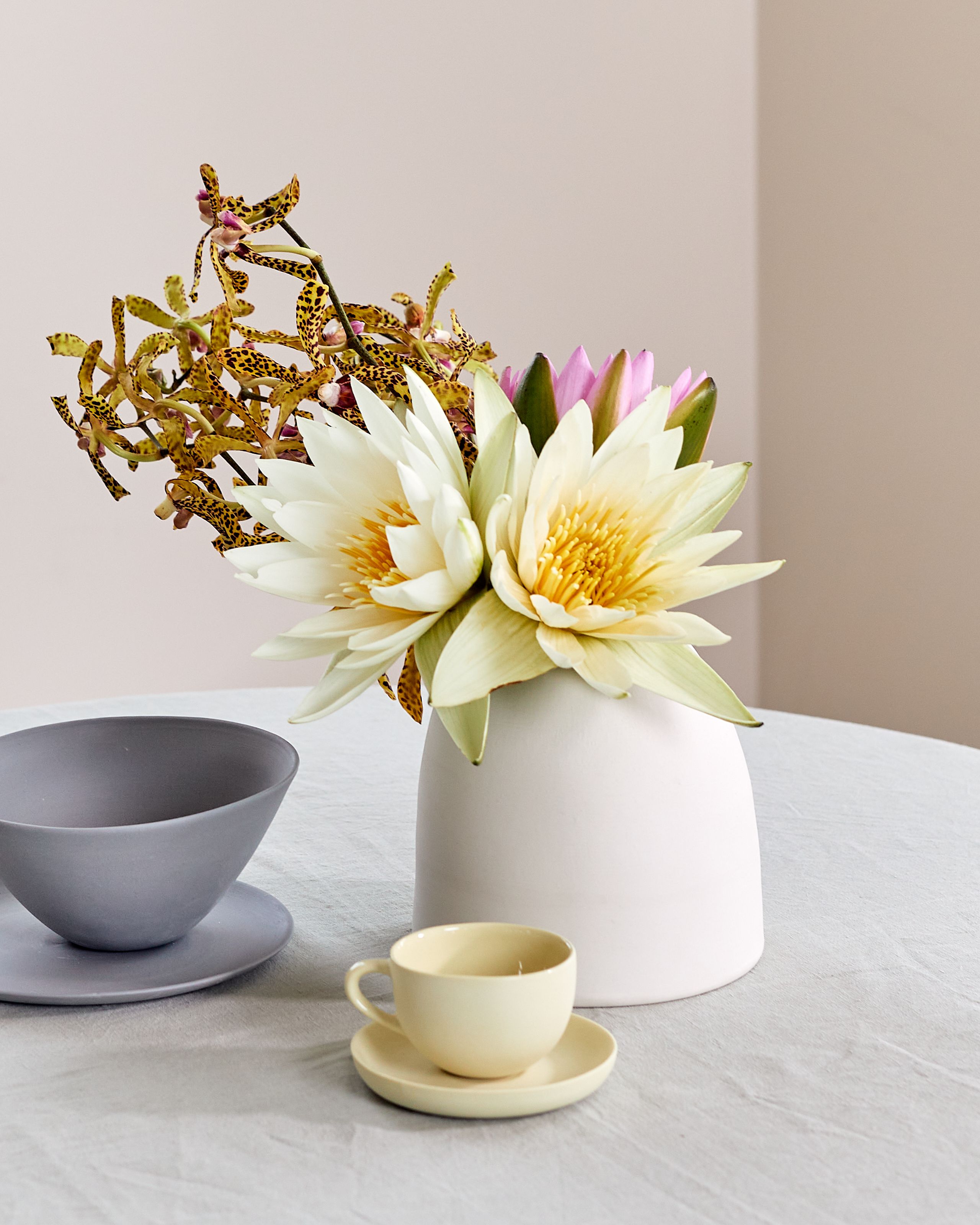Since 1994, Mud Australia has created elegant and timeless porcelain homewares. AU
The original Mud Australia store opened in Woollahra in 2007. Since then we’ve opened 12 stores globally.

Maltagliati, literally meaning ‘poorly cut’, are made from the offcuts of pasta dough left after preparing more precise shapes, such as tagliatelle or lasagne. I’ve included a recipe for a small quantity of pasta dough, in case you don’t have any pasta scraps hanging around, or you can simply throw in 120 g of dried pasta, which will require a little longer cooking time. This soup is so nourishing and is made with basic ingredients, which are often in your kitchen. Before they are cooked, borlotti beans are beautifully patterned with streaks of magenta. They are a staple I unfailingly have at hand for their beauty and sustenance.
Ingredients
300 g dried borlotti beans
60 ml (1⁄4 cup) extra-virgin olive oil, plus extra for drizzling
1 onion, finely chopped
1 celery stalk, finely chopped
1 carrot, finely chopped
sea salt
1 ripe tomato, roughly chopped
1 dried chilli
1 rosemary sprig
2 garlic cloves, roughly chopped
1.5 litres vegetable stock
(see recipe page 104) or water
grated pecorino, to serve
Maltagliati
about 100 g tipo 00 flour, plus extra for dusting
pinch of fine salt 1 egg
Serves 4 - 6
Method
Place the borlotti beans in a large bowl and cover with cold water to soak for at least 6 hours or overnight.
To make the dough for the maltagliati, tip the flour and salt onto a clean work surface and make a well in the centre. Crack the egg into the middle and, using a fork, whisk gently to slowly incorporate the flour into the egg. When the mixture becomes too stiff to use the fork, use your hands to mix in as much flour as you need for a soft dough that isn’t sticky but also not too dry. Flour can vary a lot, so you might not need all of it. Knead the dough for 8 minutes or until smooth and elastic. Cover with a damp cloth or plastic wrap and allow to rest at room temperature for at least 30 minutes.
On a lightly floured work surface, roll the dough out to a rough rectangle shape around 3 mm thick. Roll the dough through a pasta machine set to the widest setting, then roll again through the next two settings, dusting with a little flour between each roll if needed. Fold the dough back in on itself so it’s a bit narrower than the width of the machine and use a rolling pin to flatten slightly. Set the machine back to the widest setting and roll back through the first three settings again, folding and flattening the pasta dough before each roll. The pasta should be strong now, and can be rolled through the narrower settings until the dough is your desired thickness. (Alternatively, because it is such a small amount of dough and the pasta doesn’t need to be as thin as usual, you can just roll it out to about 2 mm thick using a long, thin rolling pin.) Cut the dough into rough 2 cm pieces. The less perfect the pasta shapes are, the better. Dust with a little flour and set aside while you make the soup.
A little about Julia Busuttil Nishimura
Julia Busuttil Nishimura is a cook, author and teacher. Julia teaches sell-out cooking workshops and pasta masterclasses and is a regular contributor to publications such as Country Style, The Design Files, Good Food and ABC Life. Her first book, Ostro, was short-listed for the 2018 Australian Book Industry Awards’ ‘Illustrated Book of the Year’ and named in Gourmet Traveller’s ‘Best Food Books for 2017’.



